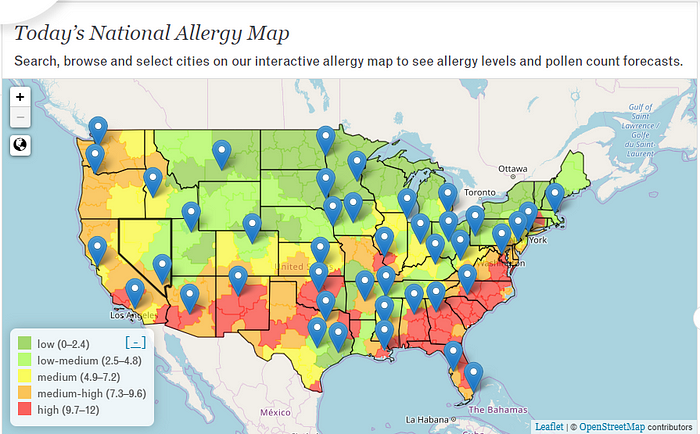Living Better With Allergy
How is digital health addressing this problem?
Up to 20% of the global population suffer from allergy. That’s nearly 1.5 billion people. In the US alone, more than half the population (>165 million) suffer from allergies each year.

The prevalence of allergic airway diseases such as asthma and rhinitis has increased dramatically to epidemic proportions worldwide. Besides air pollution, which we built PiCO Home for, the rising trend is due to the rapid changes in the environments that we live in. Around the planet, in both developed and developing countries, environments are undergoing profound changes — wildfires, melting in the polar caps, water pollution, and more. Many of these changes have negative effects not only on respiratory but also in terms of increasing allergic reaction.
So, what is an allergy?
Allergy symptoms occur when our immune system overreacts to something that is harmless to most people but triggers a reaction in anyone sensitive to it. This substance is known as an allergen.
Allergy can cover a wide spectrum of things, ranging from food allergy to skin allergy, dust, pet, drug, rhinitis, mold, sinus, and more. Some of the common allergy symptoms include runny nose and sneezing. It can also cause wheezing, shortness of breath, coughing, rashes, fatigue, headache, nausea, vomiting, and fever.

Allergic rhinitis — also known as hay fever — for example, is a group of symptoms that affect the nose. You can sneeze a lot and your nose is often runny or stuffy. Other symptoms include eyes, mouth, or skin that often feels itchy. Allergic rhinitis affects 40~50 million Americans.
Pollen allergy, another common allergen in the US, affects over 54 million people. Pollen, which is an airborne allergen, is one contributing factor that causes allergic rhinitis, irritating the sinus passages, eyes, and skin. Pollen and allergic rhinitis together account for the highest rate of allergy in the country.
Is there a cure?
The short answer is no, but there are many management and treatment methods to reduce the severity and frequency of allergy. The best way to combat allergy is through preparation. Many medical institutions have enacted ways for patients to plan and avoid, such as the National Allergy Forecast, allowing them to see what types of allergens are affecting which areas.

Staying indoors as much as possible, wearing a mask, trying not to rub the eyes, as well as frequent handwashing can also reduce the triggers of allergy. In terms of medications, symptoms can be well-controlled by taking medications regularly that reduce nasal congestion and sneezing, e.g. nasal sprays, intranasal corticosteroids or antihistamines.
As aforementioned, the current medical approach to allergy is always: 1) Consultation; 2) Testing; and, 3) Treatment.
Is there a better way to manage allergy?
The good news, as we have repeatedly written in past articles about the emergence of digital healthcare, in particular digital therapeutics (DTx), is YES. Thanks to the advancement of science and technology, together with the evolution of the internet, data analytics, and artificial intelligence, managing chronic diseases, in this case, allergy, is become more cost-effective, more convenient, and easier.

AlerSense, for example, was a DTx solution providing an early warning system for allergy and asthma air quality alerts. It demonstrates how our mobile devices, big data, and the internet are converging on the science to detect air quality for asthma and allergy sufferers. As particles and toxins in the air build, AlerSense gives patients alerts wherever we are.
Not only AlerSense, but as science and technology improve, many other innovative solutions to treating allergy are appearing at an unbelievable rate such as Poleno and Nima.
Here PiCO GO Again!
As we have repeatedly explored in past articles, DTx is the future of medical innovation. With PiCO GO, we integrate everything we’ve learned from PiCO Home (environmental sensors such as PM 2.5, VOCs, etc…) and add biometric sensors (e.g. heart rate) to make this a revolutionary DTx that can be used to treat childhood asthma.
As chronic disease like allergy requires constant intervention — behavioral change to create a better lifestyle — our intervention features will be greatly beneficial to those patients and help doctors. PiCO GO will give both patients and doctors all the tools they need.

As a wearable DTx, PiCO GO is proud to help millions of children.
To inquire more about Brilliant & Company, please do not hesitate to drop us a line:
- CEO / Ryan Yun / ryan.yun@brilcom.com
- Global Marketing Manager / Steve Tan / steve.tan@brilcom.com

